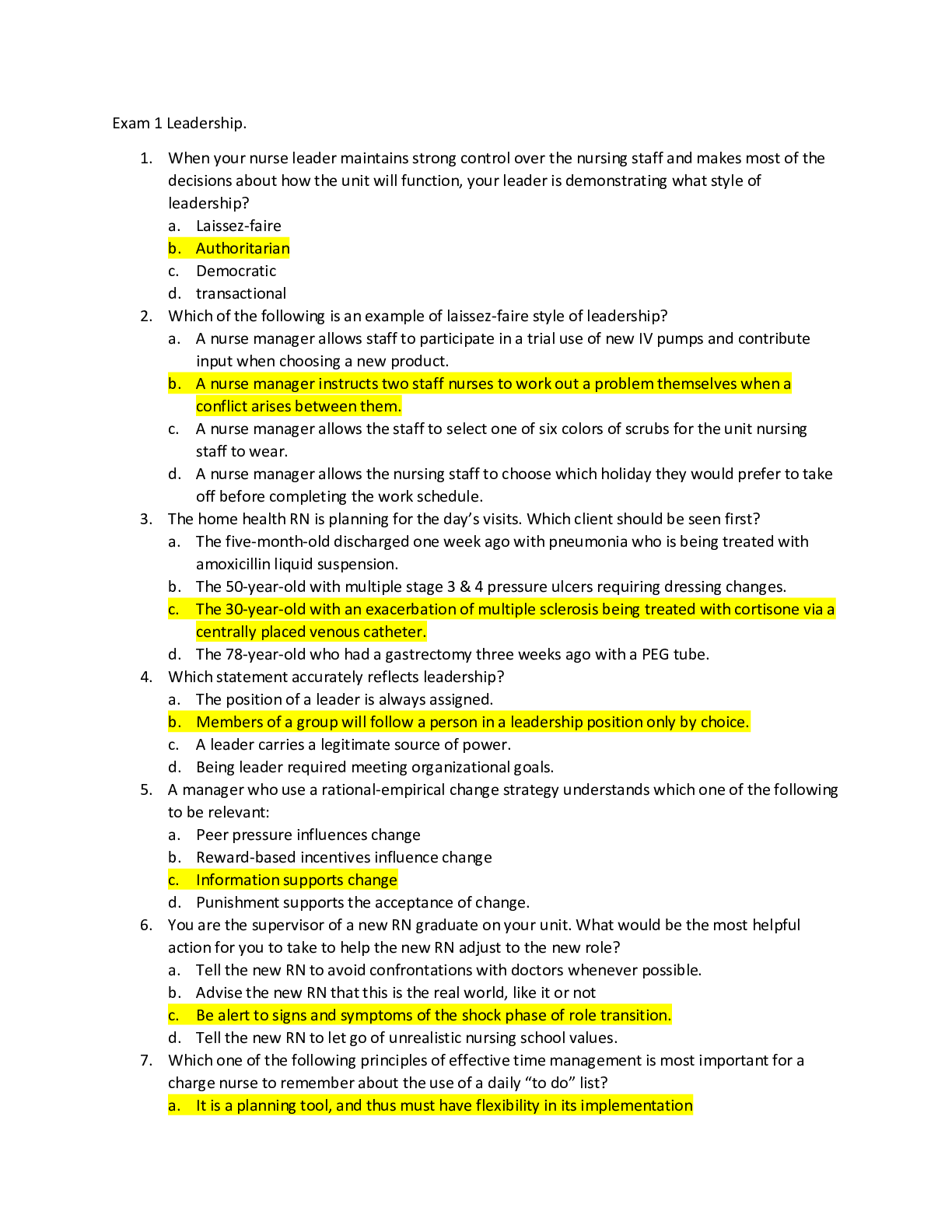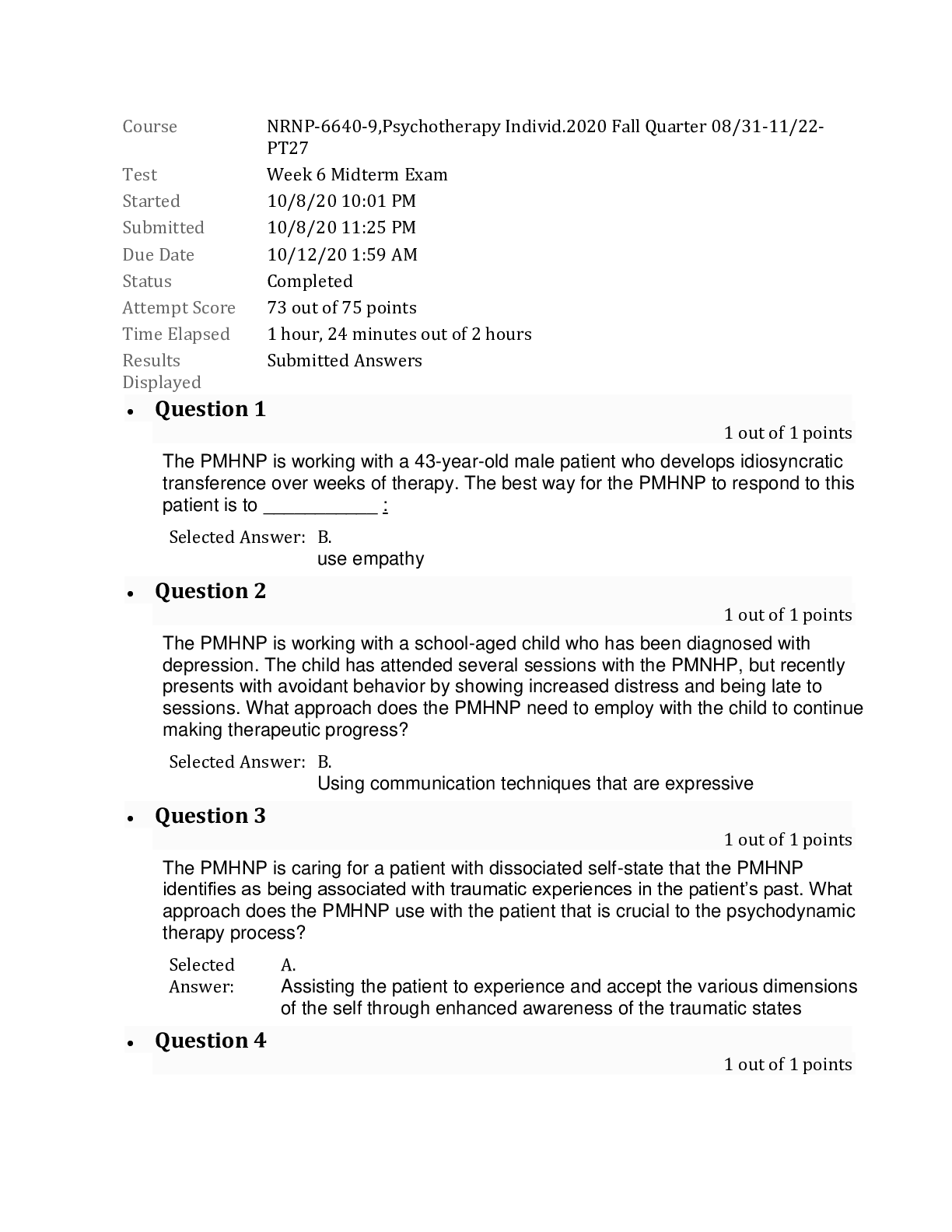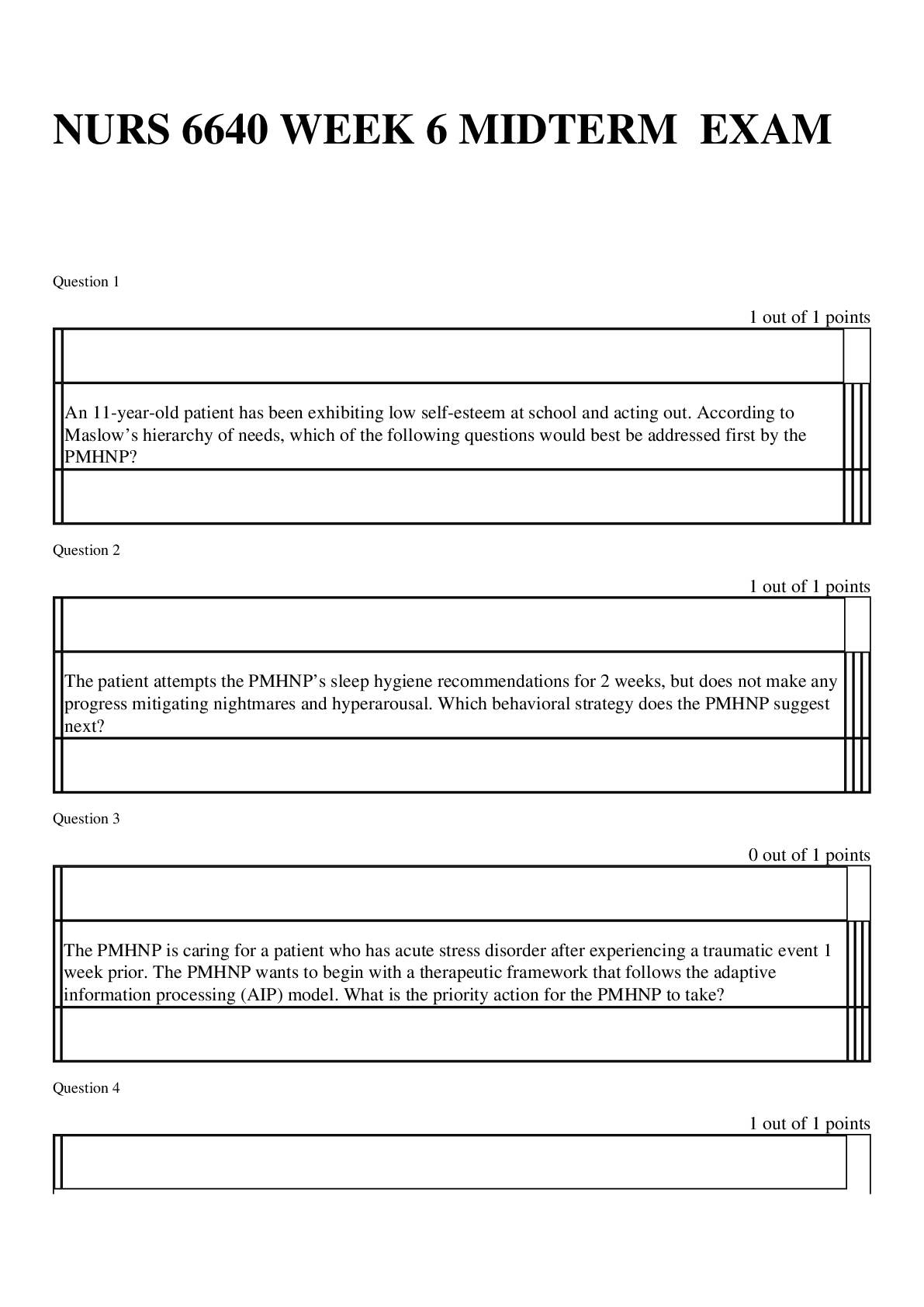Environmental Science > QUESTIONS & ANSWERS > American University ENVS 160 Fish PS 4 questions with verified answers (All)
American University ENVS 160 Fish PS 4 questions with verified answers
Document Content and Description Below
ENVS 160 Problem Set 4 Part 1—Do Salmon Add Marine-Derived Nitrogen to the Stream Ecosystem? Questions (5 points each) 1. Do marine-derived nutrients (MDNs) from salmon get incorporated into the... stream food web? If so, what parts (trophic levels or feeding categories)? Refer specifically to the data in the figures to support your answer. Yes, but they are more incorporated in the Grizzly Creek (Nitrogen) than the Stream 0372 (Nitrogen). In the case of Carbon, it is more proficient in the Grizzly Creek as well. The specific trophic levels in the case of Nitrogen is Cutthroat Trout (predator). In the case of Carbon, it is still the Cutthroat Trout. We can see that the bar for cutthroat trout is higher than the rest of the stream bars; in the case of Nitrogen this indicates a higher MDN level. We can see that in Figure 1b the bars for cutthroat trout are less negative than the other cutthroat trout stream bars, which indicates MDN presence. 2. (a) What is the significance of looking at both N and C stable isotope ratios? (Think about—or review, if you can’t remember them—how the biogeochemical cycles of these two elements di er, particularly in how they move within a food web.) ff The significance is that evaporation doesn’t apply to heavy isotopes and heavy isotopes of Nitrogen build up in consumers because of what they eat. If heavy nitrogen isotopes build up in the ecosystem, and lower trophic level organisms consume heavy nitrogen isotopes, it travels through the feed web to consumers. This will create an unbalanced ecosystem because there will be different levels of heavy isotopes on each level. The carbon ratio is important because Carbon plays a part in cellular respiration and photosynthesis. The nitrogen is important because it plays a role in all consumers. (b) Compare the patterns of N and C in Figure 1. What does this tell us about how the MDN are entering the food web? t tells us that MDN is entering the food web at the lowest trophic level. The figure can tell us this because if you look at the graphs, you can see that for figure 1a the bars are relatively low, but raise up. This is a buildup of MDN in the ecosystem. The carbon portion, figure 1b, shows that it enters the system at the lowest trophic level as well. We can see this because as we move through the graph, the bars get relatively smaller, indicating less MDN 3. What do the seasonal changes in enrichment (Figure 1) tell us about the source of the MDN? Seasonal changes show a decrease in MDN from Winter to Autumn (figure 1a and b). this tells us that the source of MDN is more present in the winter than autumn; post-spawning has more MDN than pre-spawning. 4. Both studies measured MDNs in fish. Aside from examining di erent species, does the ff experiment (Chaloner et al. 2002; Figure 2) tell you anything di erent than the ff observational study (Bilby et al. 1996; Figure 1)? If so, what? Figure 2 shows us more of a comparison between Nitrogen and Carbon, whereas in Figure 1 they were separated and harder to compare, this isn’t a difference between the two studies, just a personal observation. The difference is that carcasses were controlled and in all aspects of the study, not just an assumption of the Grizzly Creek. The more carcasses in the artificial stream meant the higher nitrogen and carbon values [Show More]
Last updated: 2 years ago
Preview 1 out of 9 pages
.png)
Buy this document to get the full access instantly
Instant Download Access after purchase
Buy NowInstant download
We Accept:

Reviews( 0 )
$9.00
Can't find what you want? Try our AI powered Search
Document information
Connected school, study & course
About the document
Uploaded On
Jun 25, 2021
Number of pages
9
Written in
Additional information
This document has been written for:
Uploaded
Jun 25, 2021
Downloads
0
Views
35








.png)

.png)










 2021.png)




